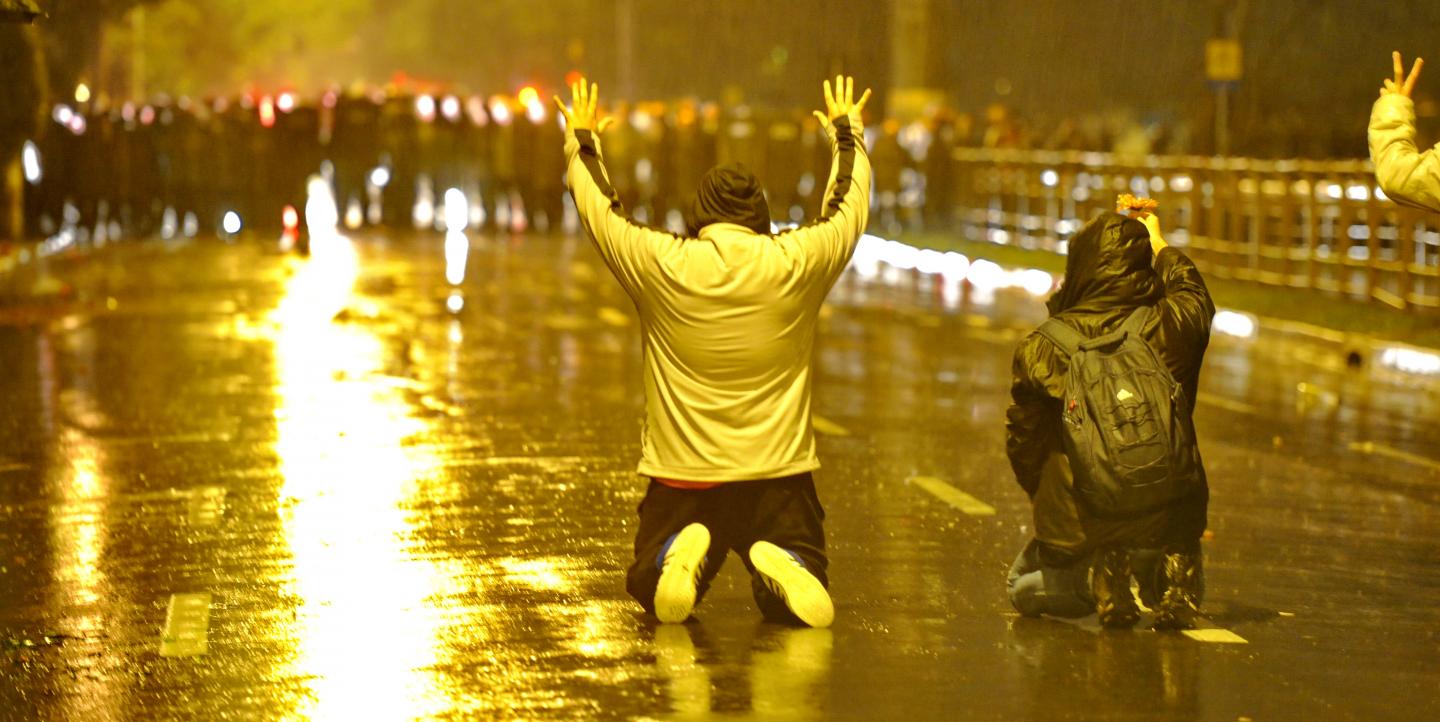The soccer World Cup starts this week in Brazil. As players get in shape and fans stock their refrigerators, news organizations are getting ready to handle the huge logistical challenge of covering such an event.
But the Brazilian and foreign journalists who will cover what happens outside the stadiums face a scenario far removed from the excitement of the matches.
In the run-up to the World Cup, activists have held numerous anti-government protests in Brazil’s major cities. Reporters have increasingly found themselves in the middle of clashes between demonstrators and security forces. Dozens of journalists have been beaten, harassed or detained either by police or protesters.
The violence reached a high point in February, when a cameraman was killed after being hit by a flare during a protest in Rio de Janeiro against a price increase in public transportation.
Covering an event like the World Cup is an enormous task for any news organization, but the social instability in Brazil prior to this event has forced journalists to focus on something more than goals and cheering fans. News organizations are bracing for the possibility of more protests and violence in the streets.
Some editors in the Brazilian media have shared their concerns about the risks their reporters will face as they do this type of coverage. While Brazil has struggled with issues of press freedom in the past, notably, judicial censorship and criminal attacks have gone unpunished. The Committee to Protect Journalists recently published a special report about these problems in Brazil.
However, the dangers of covering social protests are relatively new in Brazil, and reporters are at risk of being attacked by both sides (demonstrators or police) depending on who doesn’t like the coverage.
The situation in Brazil, and violent protests in other countries, such as Mexico, Ukraine and Venezuela, highlights the need to address journalists’ security.
Media outlets must take into account the different forms of aggression that can happen in this environment: physical, psychological, digital or legal, but also pay attention to the way these risks are related.
For example, special gear might protect a journalist during a physical attack, but if his smartphone is stolen or damaged and he hasn't taken adequate digital security measures in advance, his personal information could be compromised. In another situation, a reporter might be illegally detained and need legal advice. Or, in an even more troubling scenario, a journalist could be seriously injured and later develop psychological trauma that will need to be treated.
Some news organizations purchase special equipment, such as helmets, vests and gas masks, that their reporters could wear to a protest.
This is a good start, but more is needed. Journalists need training in first aid, as well as in backing up the data on equipment such as smartphones or tablets. News outlets need to develop protocols for reporters to let editors know their whereabouts and the security situation in any place they’re covering. And they will need support on legal or trauma issues.
Marcelo Rech, an executive at RBS, a media company in Porto Alegre, Brazil, told me that his firm is also training reporters in how to behave in hostile environments. The firm is even contacting authorities and radical groups in an effort to promote respect for the press.
The World Cup gives us an opportunity to look at how news organizations have to start thinking about journalists’ protection and security in an environment that in the past has been perceived as harmless.
And for Brazilian journalists, it will be a test for the 2016 Olympic Games in Rio, because the protests don’t seem to be going away anytime soon.
Javier Garza is an ICFJ Knight International Journalism Fellow based in Mexico City. He focuses on digital security for journalists.
Image courtesy of Javier Garza

